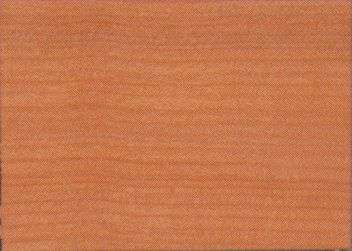
Anis (Nothofagus procera)
Family: Fagaceae
Common names: Anis, Antartic beech, Cedro del sur, Chilean beech, Coigue, Coihue, Coyan, Hualo, Lengue, Nire, Rauli, Roble, Roble ruili, South American beech
Distributed in: Argentina, Chile (Latin America)
Common uses: Boat building (general), Boat building: planking, Boxes and crates, Cabinetmaking, Cooperages, Door, Flooring, Furniture, Joinery (external): ground contact, Joinery, Light construction, Mathematical instruments, Millwork, Moldings, Musical instruments, Plywood, Railroad ties, Turnery, Vats, Vehicle parts, Veneer
Tree size: Trunk diameter is 100-150 cm
Colors: the heart isWhite, Yellowand the sapwoodWhite to yellow, Yellow.The grain isWeak figure, the textureMediumand the lusterSlightly lustrous
Natural durability: Susceptible to insect attack, Susceptible to marine borer attack
LightInduced Color Change: Darker
Kiln Schedules: UK=E US=T6D2/T3D1 Fr=5
Drying Defects: Severe collapse and honeycomb
Ease of Drying: Moderate
Comments: General finishing qualities are rated as good
Blunting Effect: Blunting effect on machining is slight
Gluing: Moderate gluing properties
Nailing: Fair to Good , Very Good to Excellent
Planing: Very Good to Excellent
Resistance to Impregnation: Sapwood is permeable
Response to hand tools: Moderate working qualities
Veneering qualities: Veneers easily, Veneers moderately easy
Steam bending: Moderate
Screwing: Easy to screw
; Turning: Fairly Easy to Very Easy
Painting: Very Good to Excellent; Polishing: Satisfactory; Staining: Very Good to Excellent;
- Numerical data Metric
- Numerical data English
- Strength properties
- References
 |
 |
 |
 |
| Item |
Green |
Dry |
Metric |
| Specific Gravity |
|
|
|
| Density |
|
528 |
kg/m3 |
| Bending Strength |
635 |
992 |
kg/cm2 |
| Crushing Strength |
285 |
459 |
kg/cm2 |
| Hardness |
|
451 |
kg |
| Impact Strength |
|
|
cm |
| Shearing Strength |
|
139 |
kg/cm2 |
| Stiffness |
84 |
98 |
1000 kg/cm2 |
| Tangential Shrinkage |
|
|
% |
| Radial Shrinkage |
3 |
|
% |
| Weight |
512 |
416 |
kg/m3 |
| Maximum Load |
0,63 |
0,84 |
cm-kg/cm3 |
| Toughness |
|
192 |
cm-kg |
| Static Bending |
|
|
kg/cm2 |
|
 |  |  |  | | Item | Green | Dry | English | | Bending Strength | 9043 | 14120 | psi | | Density | | 33 | lbs/ft3 | | Hardness | | 995 | lbs | | Maximum Crushing Strength | 4067 | 6531 | psi | | Shearing Strength | | 1989 | psi | | Stiffness | 1202 | 1401 | 1000 psi | | Toughness | | 167 | inch-lbs | | Work to Maximum Load | 9 | 12 | inch-lbs/in3 | | Weight | 32 | 26 | lbs/ft3 | | Radial Shrinkage | 3 | | % | | Tangential Shrinkage | 7 | | % | |
Density (dry weight) = 31-37 lbs/cu. ft. 0
Max. crushing strength = medium
Modulus of Elasticity (stiffness) = very low
Bending strength (MOR) = medium
Hardness (side grain) = soft
Density (dry weight) = 38-45 lbs/cu. ft.
Modulus of Elasticity (stiffness) = low
Shrinkage, Tangential = moderate
Shrinkage, Radial = small
Shearing strength (parallel to grain) = medium
Bending strength (MOR) = low
Work to Maximum Load = low
Toughness (total work) = low
Shearing strength (parallel to grain) = low
Modulus of Elasticity (stiffness) = medium
Max. crushing strength = low
Max. crushing strength = high
Density (dry weight) = 23-30 lbs/cu. ft.
Bending strength (MOR) = high
Berni, C.A., Bolza, E., Christensen, F.J.,1979,South American Timbers - The Characteristics, Properties and Uses of 190,Species,C.S.I.R.O Div. Building ResearchBrown, W.H.,1978,Timbers of the World, No. 2 South America,TRADA, Red Booklet SeriesChudnoff, M.,1984,Tropical Timbers of the World,U.S.A. Department of Agriculture, Forest Service, Forest Products,Laboratory, Madison.Farmer, R.H.,1972,Handbook of Hardwoods,HMSOForests Products Research Laboratory, U.K.,1956,A Handbook of Hardwoods,Forest Products Research Laboratory, Princes Risborough, Department of,Science and Industrial Research, Building Research EstablishmentFrance - C.T.F.T./C.T.B.,1982,Guide pour le Choix des Essences Deroulables-pour la fabrication du,contreplaque,C.T.F.T./C.T.B. FranceHoward, A.L.,1948,A Manual of Timbers of the World.,Macmillan & Co. Ltd. London 3rd ed.Kukachka, B.F.,1970,Properties of Imported Tropical Woods,Forest Research Paper FPL 125Lavers, G.M.,1983,The Strength Properties of Timber (3rd ed. revised Moore G.L.,Forest Products Research Laboratory, Princes Risborough, Building Research,Establishment Report (formerly Bulletin No.50)Patterson, D.,1988,Commercial Timbers of the World, 5th Edition,Gower Technical PressRecord, S.J., Hess, R.W.,1943,Timbers of the New World,Yale University PressRendle, B.J.,1969,World Timbers (3 Vols.,Ernest Benn Ltd. LondonTakahashi, A.,1975,Compilation of data on the Mechanical Properties of Foreign Woods (Part 2,Central and South America,Shimane University, Japan, Research Report on Foreign Wood No.4Timber Development Association,1948,Some New Timbers and Their Uses No. 34,Timber Development Association Limited, London [TRADA]Tortorelli, L.,1956,Maderas y Bosques Argentinos,Editorial Acme S.A.C.I. Buenos AiresWoods, R.P.,1949,Timbers of South America,TRADA, Red Booklet Series
|








